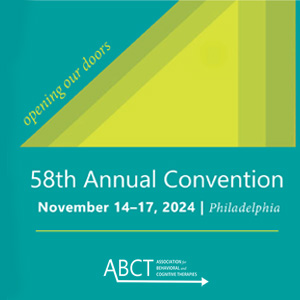Adult Depression
Assessing the reliability of a brief measure of rumination cross-sectionally and throughout treatment
(PS3-4) Assessing the Reliability of a Brief Measure of Rumination Cross-sectionally and Throughout Treatment

Kylee F. Behringer, B.A.
Doctoral Student
University of Southern Mississippi
North Canton, Ohio, United States.jpg)
Michal E. Clayton, M.P.H.
Clinical Psychology PhD Candidate
Teachers College, Columbia University
Brooklyn, New York, United States- PS
Phillip E. Spaeth, Other
Graduate Student
Teachers' College
New York, New York, United States - DM
Douglas Mennin, Ph.D.
Professor of Clinical Psychology
Teachers College, Columbia University
New York, New York, United States 
Megan E. Renna, Ph.D.
Assistant Professor
University of Southern Mississippi
Hattiesburg, Mississippi, United States
Author(s)
Co-Author(s)
Assessing the reliability of a brief measure of rumination cross-sectionally and throughout treatment
Kylee F. Behringer1, Michal Clayton2, Phillip E. Spaeth2, Douglas S. Mennin2, Megan E. Renna1
1University of Southern Mississippi, 2Teachers College Columbia University
Background: Rumination is perseverative negative thinking about past loss, upsetting experiences, negative feelings, and distressing emotions and is often implicated in multiple psychological disorders, including major depressive disorder and generalized anxiety disorder. The 12-item Rumination-Reflection Questionnaire’s rumination subscale (RRQ) measures the tendency to engage in ruminative thinking. The introduction of a reliable, brief measure of rumination would reduce respondent fatigue and optimize treatment progress monitoring. This study assessed the reliability of a 3-item version of the RRQ (RRQ-3) compared to the full RRQ in both a cross-sectional sample and across time during Emotion Regulation Therapy (ERT).
Method: In study 1, undergraduate students (N = 485) completed online questionnaires assessing rumination and other related constructs. Study 2 consisted of two transdiagnostic clinical samples experiencing high rates of worry and rumination (N = 206) who completed ERT. Across both trials, rumination was assessed at pre and post treatment as well as at 3- and 9-month follow-ups. Participants in both studies completed the full RRQ and RRQ-3.
Results: In study 1, there was a strong, positive relationship between the full RRQ and RRQ-3 (r = 0.93, p < 0.001). Cronbach’s alpha for the RRQ-3 was 0.79, indicating acceptable reliability. In study 2, the Cronbach's alpha for the full RRQ ranged from 0.85 (pre-treatment) to 0.94 (post-treatment), demonstrating good to excellent internal consistency throughout ERT. The Cronbach’s alpha for the RRQ-3 ranged from 0.58 (pre-treatment) to 0.85 (post-treatment), indicating poor to good reliability throughout ERT. For Study 2, a fixed effects growth model showed a significant reduction in the RRQ-3 throughout ERT and follow-up (β = -4.10, SE = 0.29, p</em> < 0.001).
Discussion: Taken together, findings across both studies suggest that the RRQ-3 has high internal consistency and, overall, is comparable to the full RRQ. Throughout ERT, albeit not at pre-treatment, both the RRQ and the RRQ-3 showed good to excellent internal consistency. One potential explanation for the poor reliability at pre-treatment may be differences in participants’ symptom severity prior to ERT, with participants, therefore, providing more variable responses on the briefer version of the RRQ. Overall, the RRQ-3 offers clinicians and researchers the potential to improve treatment progress tracking by reducing client and participant burden while assessing rumination accurately.

.png)
